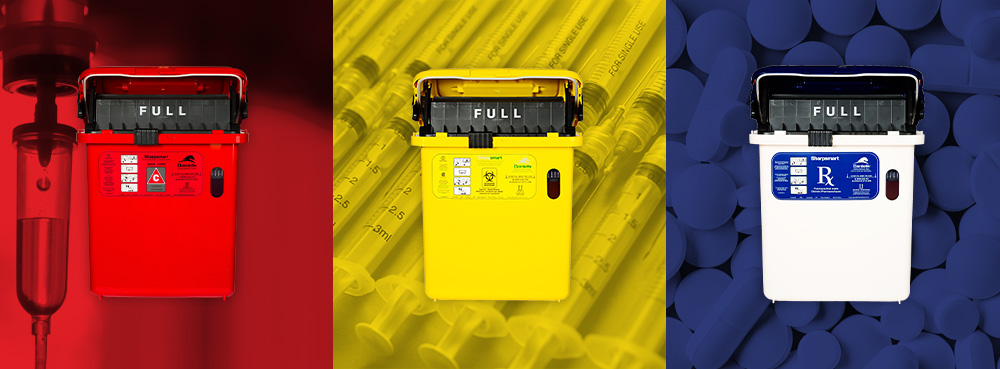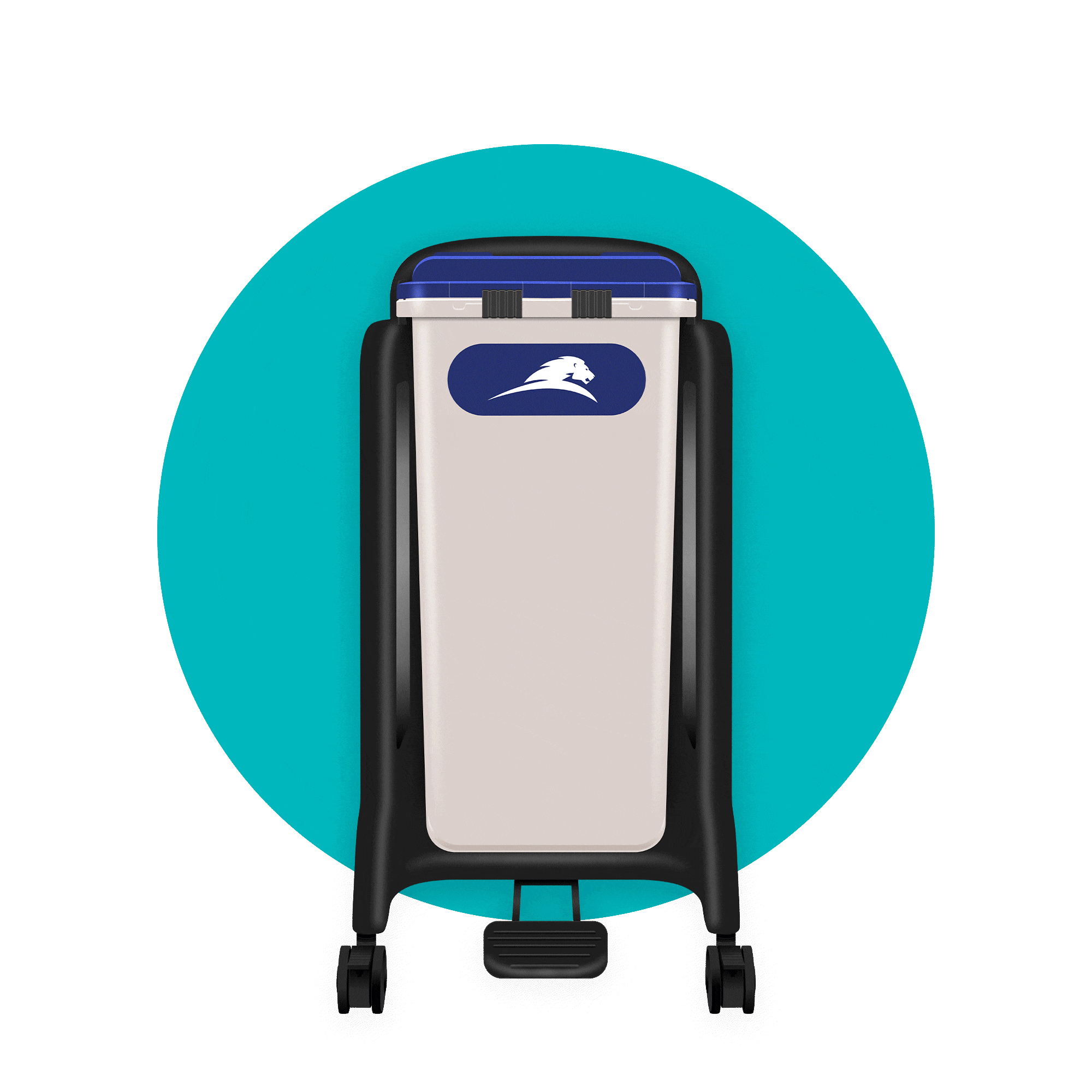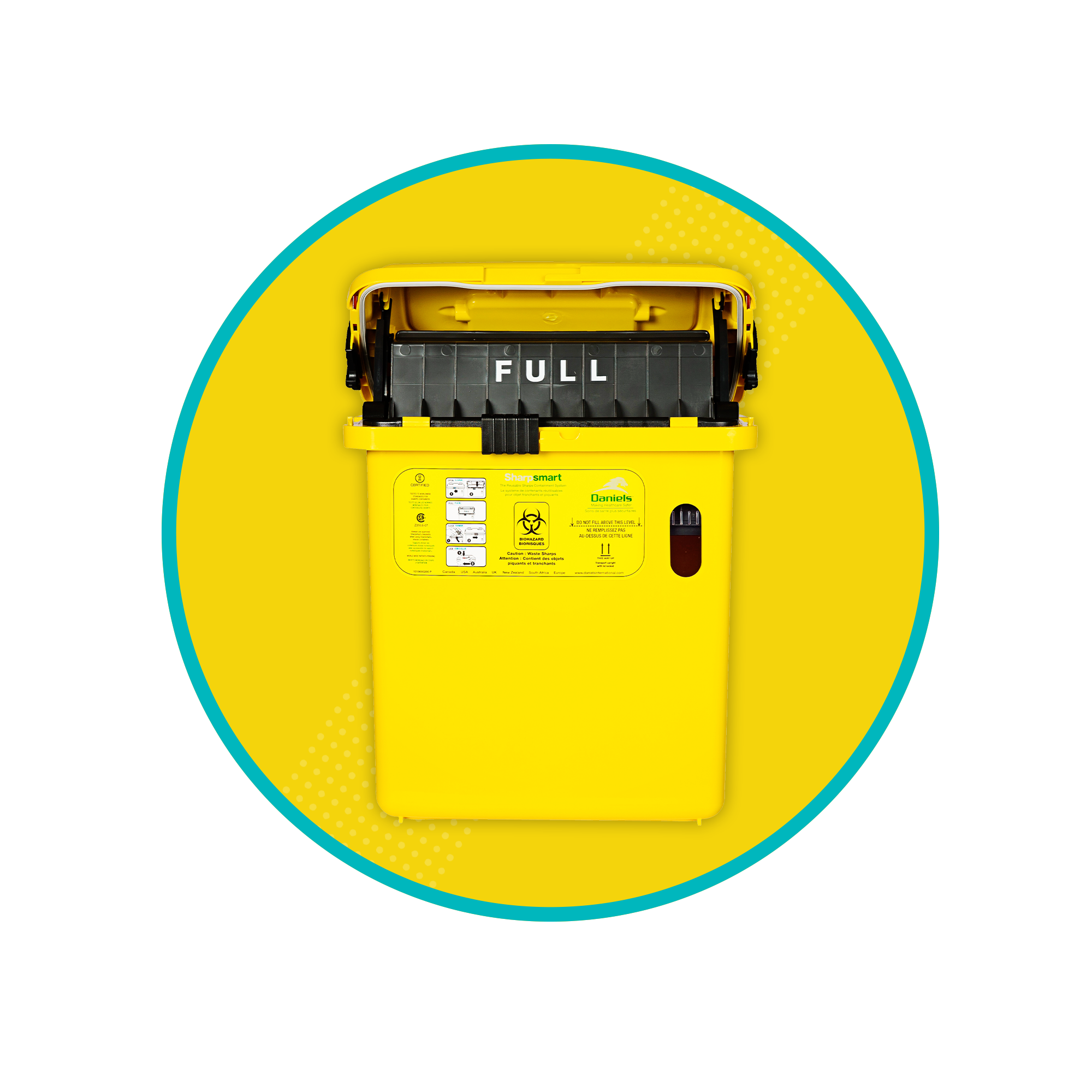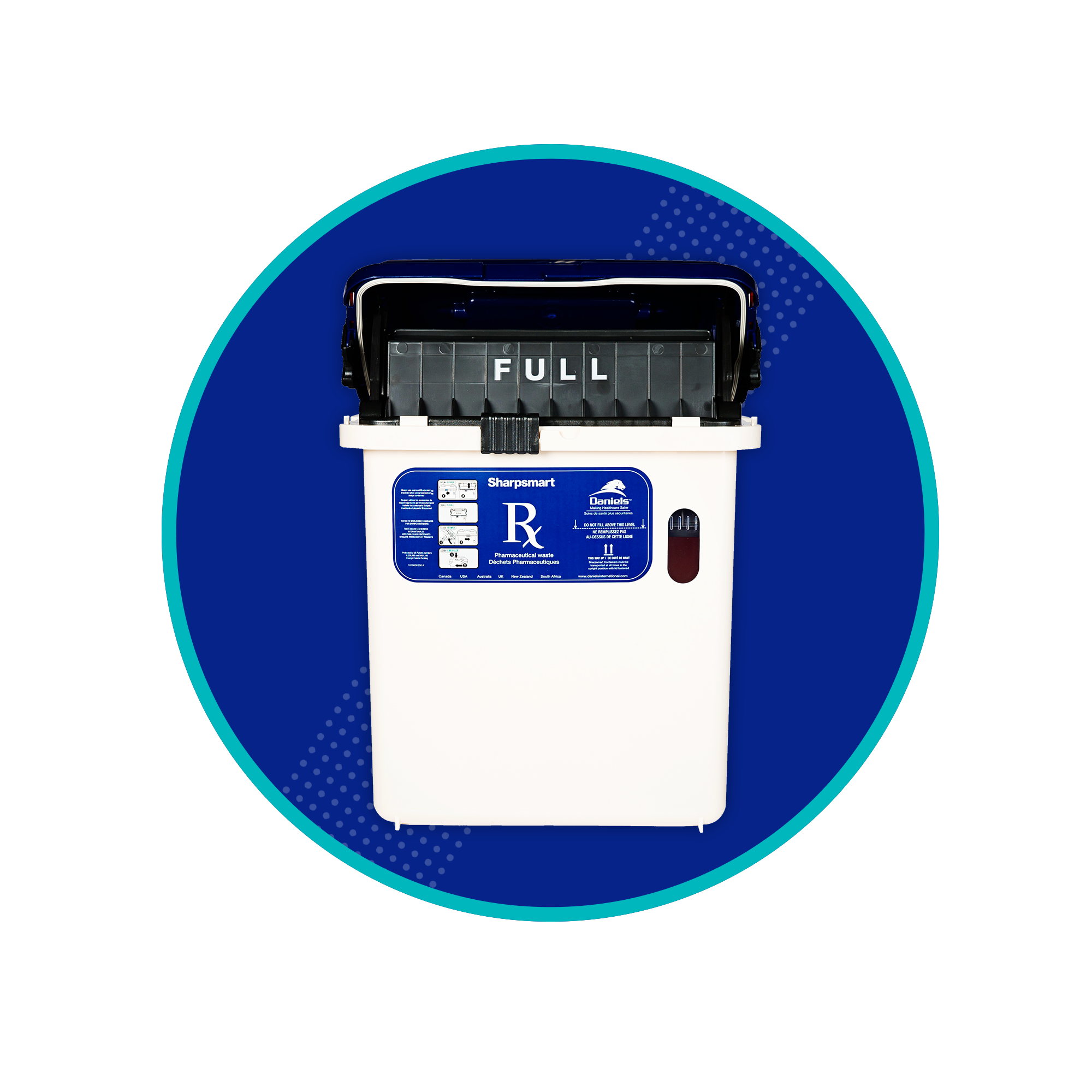Colour Coding Requirements for Biomedical Waste

Colour coding of medical waste containers is one of the most basic and crucial, yet commonly misunderstood, components of any biomedical waste management program. This simple colour-coding helps ensure that different categories of medical waste go where they belong, helps facilities keep costs down, and helps ensure compliance with government regulations.
TOPICS WE WILL COVER:
1 / Why Is Colour Coding Important for Safety and Waste Strategy?
2 / Where Can You Find Guidelines on What Colours To Use in Canada?
3 / What Colour Does General Waste Require?
4 / What Colour Does Biomedical Waste Use?
5 / How Can Daniels Health Partnerships Guarantee Correct Colour Coding?
6 / Colour Coding is Crucial for Safety and Compliance
Why Is Colour Coding Important for Safety and Waste Strategy?
The dangers biomedical wastes pose are clear—potential infections, needlestick injuries, pharmaceutical abuse, environmental harm, and more. As a result, there are many systems in place to guarantee the safety of both healthcare providers and patients when dealing with this waste. One of the most important of these is colour coding.
Proper colour coding helps guarantee waste ends up in the correct receptacle that is designed for proper disposal of its waste type, preventing injuries and ensuring effective & compliant elimination. For example, a sharp that lands in the general waste stream due to a container mix-up poses an obvious risk that colour coding could have mitigated.
Where Can You Find Guidelines on What Colours To Use in Canada?
The Canadian Council of Ministers of the Environment (CCME) has developed Canada-wide guidelines for defining, handling, treating, and disposing of biomedical waste. These guidelines are not enforceable unless adopted by the provinces; however, they do promote uniform practices and set minimum standards for managing biomedical waste in Canada. According to the Canadian Biosafety Handbook Chapter 16.2 Storage and Disposal of Biomedical Waste, “In facilities where multiple types of biomedical waste are generated, colour-coded waste holding bags or containers can be used to differentiate between types of waste.”
In most provinces and territories, colour coding requirements are mandatory. These regulations are generally similar to each other and create a standard set of coding requirements that facilities should follow.
What Colour Does General Waste Require?
The general waste stream obviously may not demand strict sorting or differentiation. In most places, any kind of container will suffice. However, inside the walls of a medical facility, even general waste bins exist as a part of a careful system. These containers should also be clearly colour coded, if only to avoid mixing the waste streams. Medical waste should never mix with general waste to prevent injury or non-compliance. Moreover, mixing general waste items like papers, food containers, or anything else non-medical into the regulated medical waste stream fills containers up too quickly and may increase costs if pricy disposal methods like incineration are used on garbage that doesn’t require it. Colour coding usually designates grey or green containers for general waste and recyclables as blue.
What Colour Does Biomedical Waste Use?
There is no national-level regulation concerning the colour coding of regulated medical waste. There are, however, some commonly accepted colour codes applied by the majority of facilities in provinces and territories across Canada. These are only guidelines, however, and it is crucial to check if there are differing regulations in any given locality.![]()
Which Kind of Rubbish Goes Into Red Bins?
Red containers are typically used for the storage and disposal of cytotoxic waste, including cytotoxic drugs as well as any tubing, tissues, needles, gloves, vials, preparation materials, ampoules, cleaning materials and personal protective equipment contaminated with cytotoxic materials.
What Types of Waste Should Be Placed in Yellow Bins?
Yellow is typically used for sharps which include syringes, scalpels, glass slides, and other medical waste which could pose a threat of puncture or slicing. It is also commonly used for non-anatomical biomedical waste.
Which Kinds of Trash Go Into Green Bins?
Green is commonly used for general waste, which is not regulated medical waste. This type of waste does not need to be disposed of through any special medical waste channels and does not pose a special threat of infection.
Which Types of Trash Go to Blue Bins?
Blue is most often used for non-hazardous pharmaceutical waste. This includes a wide range of pills, medications, and general pharmaceuticals. However, it may also be used for recyclable waste containers as well in some cases.
Which Kinds of Trash Go to Clear or Other Colours?
Other colours of containers may also be used for different types of waste. For example, clear or blue waste containers may be used for recyclable wastes, and black may be used for general waste, such as in British Columbia. There may be other colours or distinctions not covered above, so employers should also check provincial and local regulations.
How Can Daniels Health Partnerships Guarantee Correct Colour Coding?
Daniels Health offers a holistic approach to medical waste disposal. Daniels’ containers come in every necessary colour, whether red, yellow, green, or others. These containers also meet the safety needs of the specific type of waste they are made to contain. Partnerships with Daniels can also include waste mapping, wherein experts visit the facility and track waste from the moment it is created to the moment it leaves the facility for disposal. This allows them to recommend containers and placement perfectly customised to the staff’s needs. Thus, waste mapping can ensure a medical facility utilises the correct colour coding for all its containers. It also offers additional benefits in workflow efficiency and better waste management practices. Daniels can also help facilities develop custom waste segregation posters specific to the containers in their facility.
Colour Coding is Crucial for Safety and Compliance
Overall, the colour of a facility’s bins may sound like an insignificant detail. But, correct container colour coding is a crucial element of a successful waste management strategy. Incorrectly using a bin can risk waste stream mixing that could constitute non-compliance or add unnecessary costs. Additionally, it leads to improper sorting of hazardous waste materials that might endanger staff and patient safety. Whenever a facility’s waste disposal strategy is in doubt, a partner like Daniels can cut through the confusion. Daniels can help finalise a waste management plan that puts worries about compliance and safety out with the trash.
